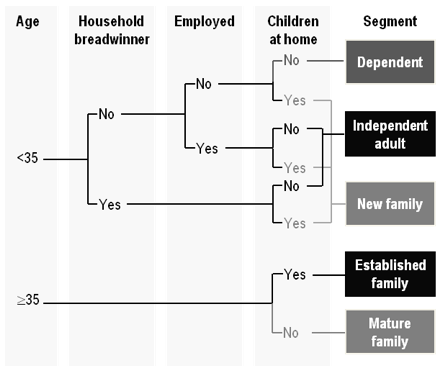
How to Write “Golden Questions” for Market Segmentation

Golden questions are questions used to allocate people to segments. They are also known as self-selection questions.
The main applications of golden questions are:
- As discovery questions in a sales scenario (e.g., a salesperson may be trained to ask a few questions, which allows them to work out the segment somebody is in)
- When collecting data in sign-up forms (e.g., industry, firm size)
- When screening people to participate in market research studies
There are three basic approaches to creating golden questions: use judgment to write a single question; use judgment to write a set of questions; use machine learning to select the golden questions from a larger set of questions.
Download your free DIY Market Segmentation ebook
Example of a judgment-based golden question
The most straightforward approach to writing a golden question is to theorize about relevant segments and write one or a small number of questions that allow consumers to select which segment they are in. For example, in the 1990s Microsoft segmented people according to their attitude to technology using the following question:
Which one of the following phrases best describes you and your attitude towards technology in general?
I love technology, I spend a lot of time reading up on new developments and trying new things
I like to try and keep up with technology but usually need someone to help me or explain things
I accept technological developments but don't really get a buzz out of them
I feel behind when it comes to technology but am open to learning more about it
I find the whole idea of new technology a bit daunting at times
I think the world would be a better place without technological change
Example of a set of judgment-based questions
Sometimes it can be faster and easier to ask multiple questions. The diagram below shows how McKinsey has historically measured life stage:

Empirical approaches
Empirical approaches proceed in two stages. First, a segmentation algorithm, such as k-means cluster analysis or latent class analysis is used to form segments using all the relevant variables. Then, a machine learning or statistical tool, such as linear discriminant analysis or random forest is used to identify the golden questions. Empirical approaches always involve making a tradeoff between the accuracy of the model versus the number of golden questions (fewer golden questions mean less accuracy).
Download your free DIY Market Segmentation ebook
Want to learn more? Check out our other handy How To guides!



